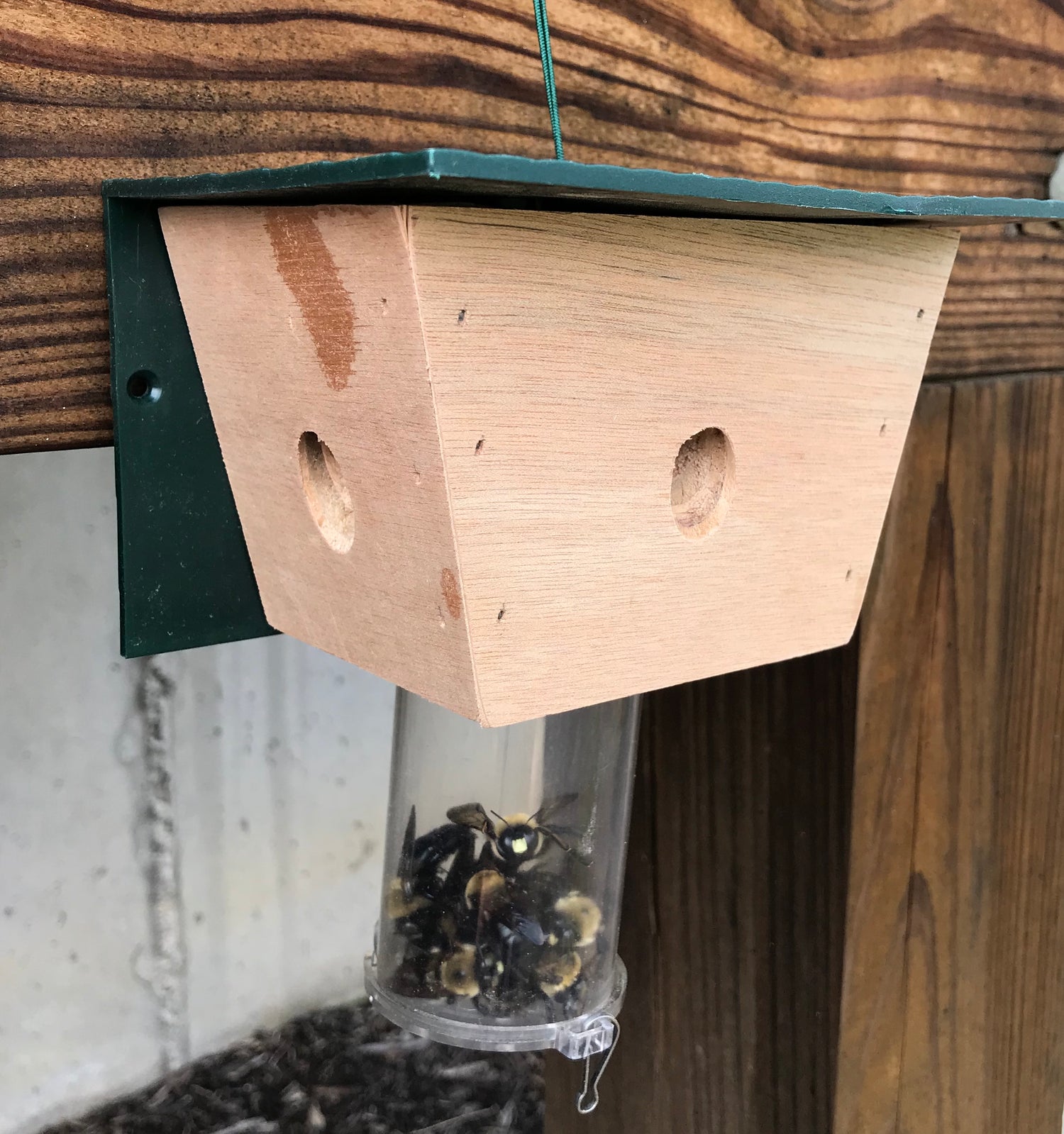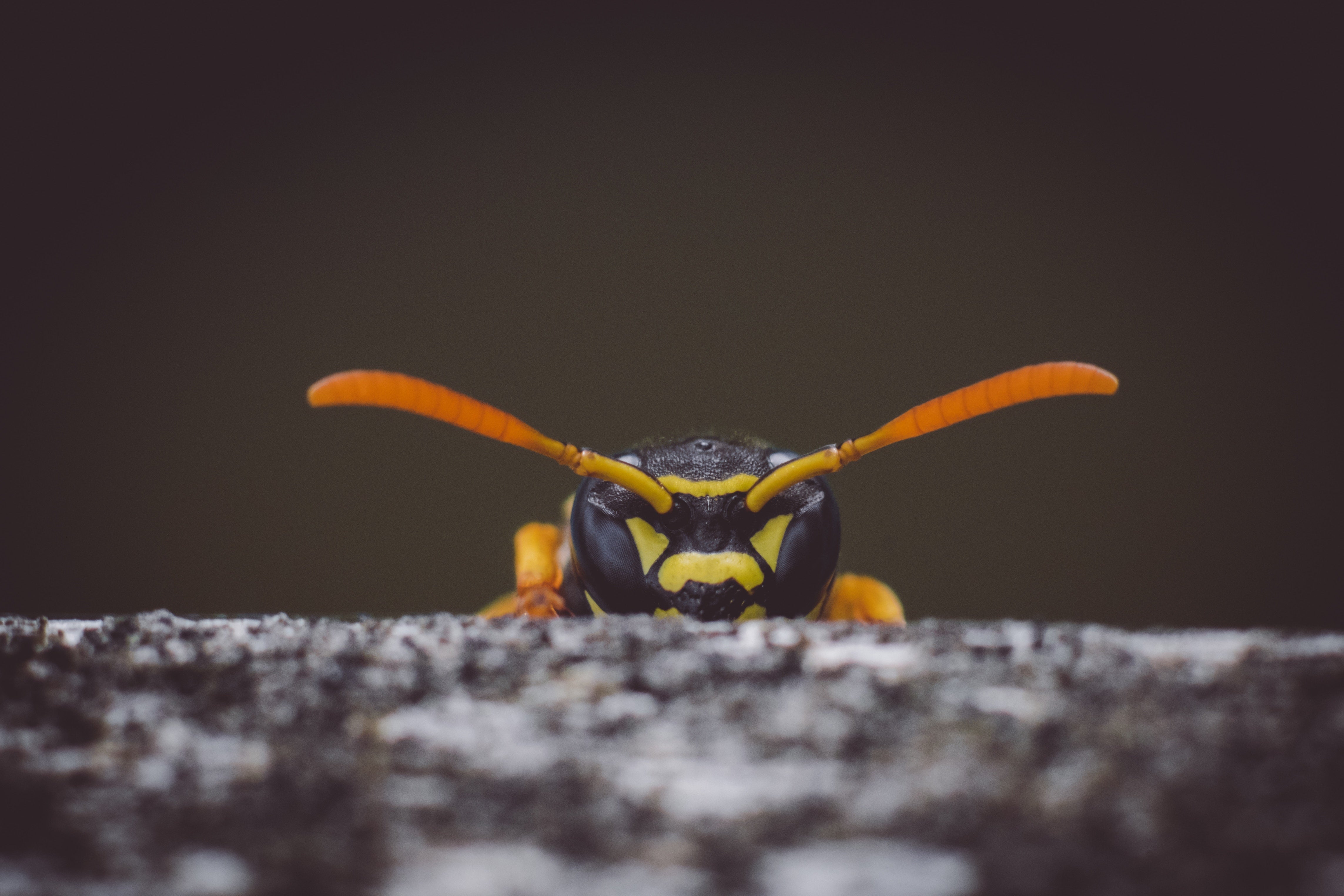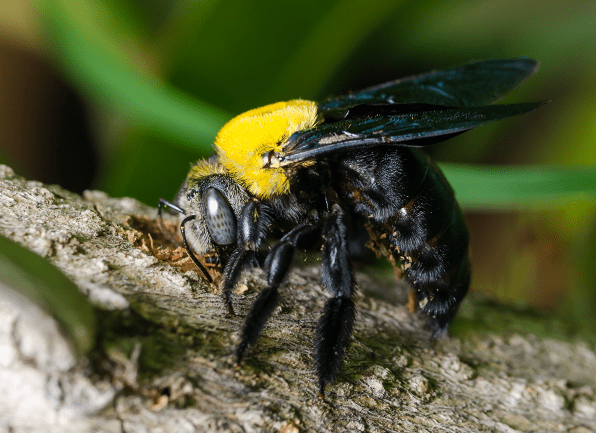You Can Install Your Trap Anytime, But When Is The Optimal Time?
Carpenter bees emerge from their nests every spring. Their first priorities are to gain nourishment and find a mate. Carpenter bees are solitary bees, which means every female must find a male to mate with. This process can take 2–3 weeks. This is the absolute best time to proactively install your carpenter bee traps.
After a carpenter bee selects its mate, the bees search for a place to build their home. Hopefully at this point you already have your trap up. Your carpenter bee traps will yield the greatest results if they are put up before the nesting action begins.

But that isn’t the only time you can put up the traps. Even if you are behind the bees’ mating schedule, you can still put up your carpenter bee traps after nesting has occurred. Just be sure to plug up any existing carpenter bee nests before putting up your traps.
Plugging the existing nests is crucial because carpenter bees are extremely territorial creatures. When they have established a nest, they are hyperfocused on maintaining and protecting that nest. This means they will ignore the trap even if you put it right next to their home.
Let’s think about it this way: Would you barge into your new neighbors’ house just because it was there? Of course not. Carpenter bees are the same. They have put in a lot of work and even laid some eggs deep in the tunnels of the nest. That female carpenter bee isn’t just going to leave all her life’s hard work behind. She needs a reason to leave – her nest has to be inaccessible.
Plug up the nests with wooden dowels, steel wool, and wood caulk. You can treat the holes first with insecticide, or put a cotton ball soaked in rubbing alcohol into the nest. This will suffocate any critter inside. Next, push the wooden dowels (about ½” or less in diameter) into the nest as far as you can. Filling the hole with steel wool too is a great tunnel filler. Use caulk or wooden corks to make the entrance to the nest flush again with the exterior surface. We sell specially sized wooden corks that fit most carpenter bee nests.
Be sure to wear gloves when taking care of any active nests. Female carpenter bees can give a prickly sting! The best time to patch up a nest is at dusk.
Once the nests are all treated, you are in the clear to put up your carpenter bee traps. The now-nestless carpenter bees will start searching for a new place to stay. The trap provides them an easy and convenient solution.
You can increase the attractiveness of your late-season trap by adding dead carpenter bees to the bottom of the trap, or by putting a dime-sized amount of our Bee-Licious Bee Bait onto the bottom tube. Carpenter bees are highly attracted to the pheromone released by dead carpenter bees!
Keep the traps up all the way until the end of fall. Store them in a dry place over winter, and then place the traps back out right at the beginning of spring!










2 comments
Customer Support
@L Harter – There is no requirement of when to empty your trap. However, if all of the bees in the receptacle are dead, you can empty it. Save two dead carpenter bees and keep them in the receptacle to continue releasing the pheromones to attract new bees.
L Harter
Put two traps up on each side of my ranch house. Started catching bees immediately.
Question: traps are 3/4 full, when should I dump them?
Leave a comment
All comments are moderated before being published.
This site is protected by hCaptcha and the hCaptcha Privacy Policy and Terms of Service apply.